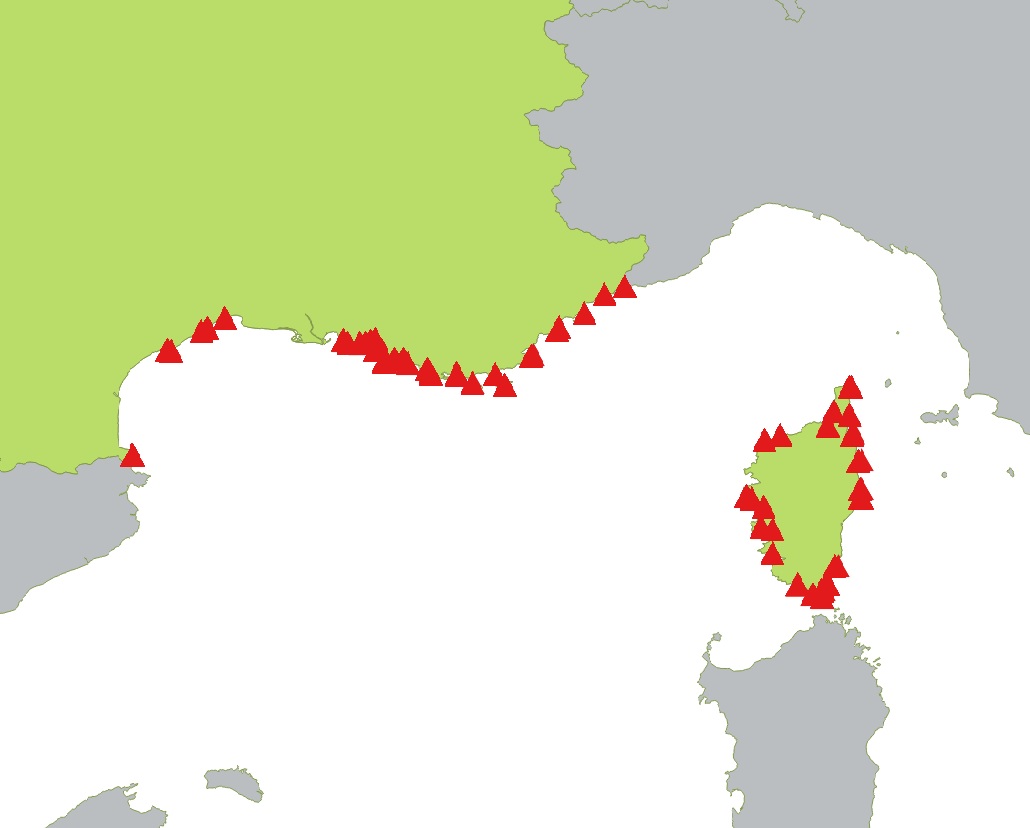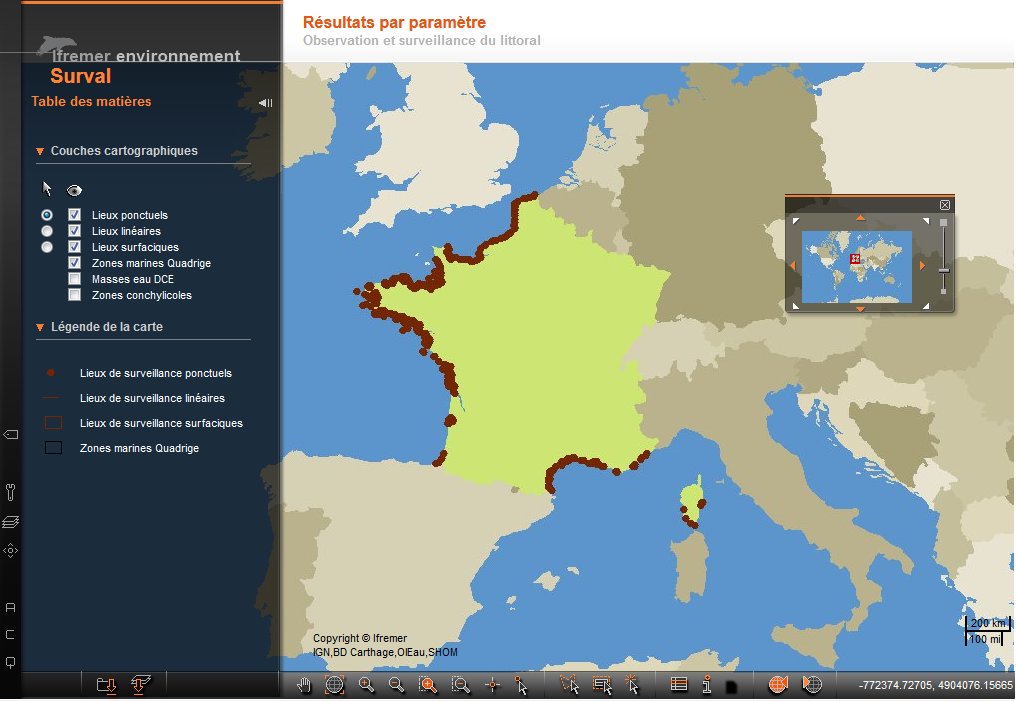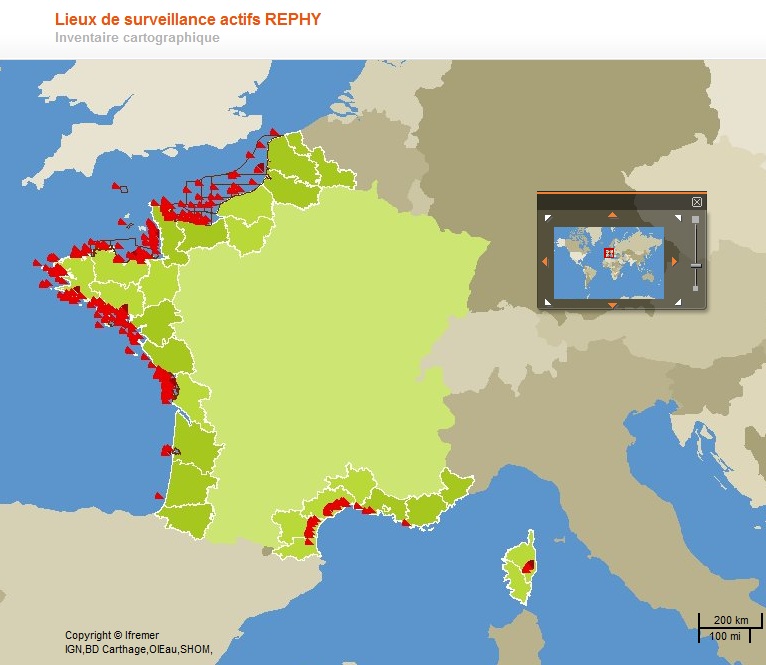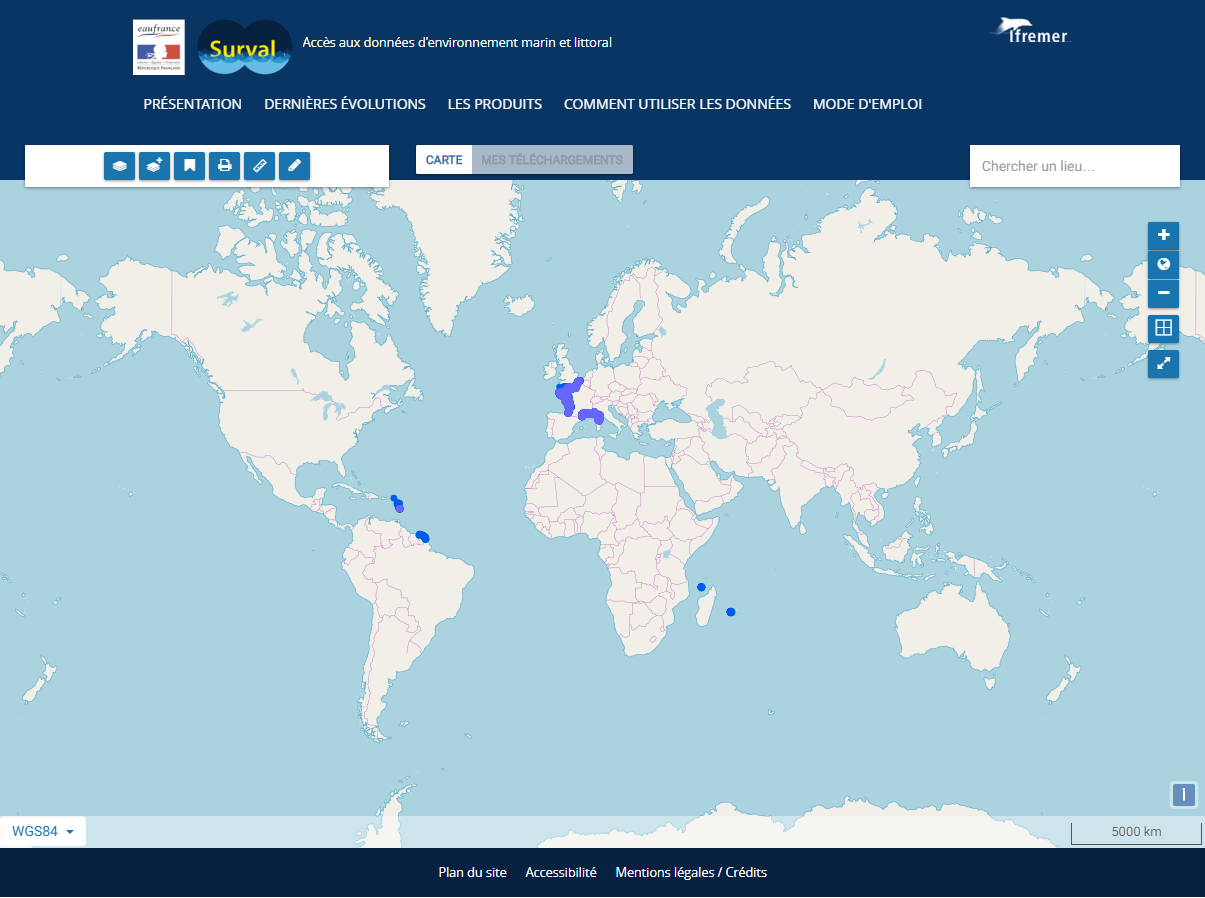Point de suivi
Type of resources
Available actions
INSPIRE themes
Provided by
Years
Formats
Representation types
Update frequencies
status
Scale
-

The definitive coastal information system, Quadrige stores coastal observation and monitoring network data. In order to manage coastal monitoring data, Ifremer developed the Quadrige² information system. Quadrige is one element of the Water Information System (SIE) http:// www.eaufrance.fr, et à ce titre, contribue aux travaux du Secrétariat d'Administration National des Données Relatives à l'Eau (SANDRE) http://www.sandre.eaufrance.fr. Quadrige Marine Zones is a reference source unique to the Quadrige system. It is used to break down the coast of the French mainland and overseas territories into large areas and to connect each one with observation and monitoring locations.
-

Données de surveillance des herbiers à Posidonia oceanica en Méditerranée entre 2007 et 2012. Deux niveaux font l'objet de mesures et de prélèvements sur les lieux de surveillance : 15 m de profondeur et la limite inférieure de l'herbier. Les données renseignent sur le stade de maturation des feuilles, la densité (dénombrements de faisceaux vivants dans un quadrat de 40x40cm), la longueur des feuilles et bases foliaires, la largeur des feuilles et l'état de leur extrémité, ainsi que la biomasse des faisceaux foliaires et des épibiontes. Pour la limite inférieure de l'herbier, les données de suivi renseignent également sur sa profondeur (en mètre) et son type (régressive, progressive, ou franche).
-

Volet de réseau national REMI (Réseau de Contrôle Microbiologique), anciennement REMIC jusqu'en avril 2011. Ces données concernent la surveillance microbiologique régulière des zones de production conchylicoles afin de vérifier que le niveau de contamination, sur la base du dénombrement des Escherichia coli, reste conforme au classement (A, B et C) défini dans les arrêtés préfectoraux.
-

Réseau de surveillance des phycotoxines dans les organismes marins (REPHYTOX) assure des prélèvements de coquillages dans un réseau de lieux de prélèvement répartis sur l’ensemble du littoral (environ 250 lieux potentiellement mobilisables). Les lieux de prélèvement REPHYTOX peuvent être communs avec des lieux REPHY. Les prélèvements peuvent concerner divers types de coquillages, en gisements naturels ou bien élevés selon des modes variés (bouchots, filières, tables, etc.). En tout état de cause, l’association entre lieux REPHYTOX et un certain nombre de lieux REPHY est étroite, les résultats REPHY pouvant déterminer le déclenchement de la recherche de toxines sur les lieux REPHYTOX de la zone. Ce jeu présente plusieurs fichiers de paramètres mesurés pour des types de toxines distincts entre 2006 et 2016 sur les lieux de surveillance : toxines amnésiantes (REPHYTOX-ASP) ; toxines paralysantes (REPHYTOX-PSP) ; et toxines lipophiles (REPHYTOX_LIP_AC et BE) avec les résultats des bio-essais (BE) et analyses chimiques (AC depuis 2010). A chaque paramètre de concentration mesuré sont associés le lieu de prélevement de l'échantillon, la date, le support, la fraction et la méthode utilisée.
-

Since 2008, the Coastal Chemical Contamination Observation Network (ROCCH) has taken over from RNO (French National Observation Network for Quality in Marine Environments), which had existed since 1974. ROCCH aims to meet national, community and international obligations relating to monitoring chemicals in marine environments. It is therefore more of a control network than a heritage network as RNO once was. The backbone of ROCCH is to apply the European Water Framework Directive (WFD) and to meet the obligations set out in OSPAR Conventions and in Barcelona. As the WFD insisted on decentralization, ROCCH has gone from having just one project leader (the Ministry for the Environment) to having many decision-makers (water agencies, DIREN etc.). Chemical analyses are no longer conducted by Ifremer alone, but are attributed to other partners following calls for tender. ROCC also includes the monitoring of chemicals in shellfish production areas for the Food safety agency (DGAL) and the Ministry for Agriculture and Fisheries. Monitoring focuses on the three regulated metals: mercury, lead and cadmium in the given areas. Monitoring of these chemical contaminants is conducted in the three marine matrices: water, biota and sediment. Testing also includes imposex, the biological effect of tributyltin (TBT), as required by the OSPAR convention.
-

The French national network (REMI) includes a regular monitoring system and a warning system: - The regular monitoring system checks that the level of microbiological contamination in each production area remains within the limits set by the classification defined in the prefectural decree and tests unusual occurrences of contamination. - The warning system is triggered when results of the monotoring programme exceed or are at risk of exceeding the norms defining the quality classes and thresholds, or in case of contamination risk (pollution spillage, storms, etc.), or even in the case of a suspected or confirmed epidemic in shellfish.
-

REPHY is a national network covering the coast of the French mainland along with that of three of its overseas departments: Martinique, Guadeloupe and Reunion Island. The aims are as follows: - to observe all phytoplankton species in the coastal waters and to monitor events such as coloured water, exceptional blooms, and the proliferation of species which are toxic or disruptive to marine fauna, - Particularly to monitor species producing toxins which are dangerous to shellfish consumers . These objectives are complementary, as the regular monitoring of all phytoplankton species makes it possible to detect known toxic and invasive species, but also to detect potentially toxic species. It is the presence of these toxic species in the water which triggers the monitoring of toxins in shellfish. The mission of REPHY is to monitor shellfish in their natural environment (such as parks and deposits). For shellfish removed from marine environments (that is to say in shellfish logistics establishments or on markets prior to export), national monitoring and control plans are organised by the General Food Directive at the French Ministry of Agriculture. Analyses are performed by the accredited departmental veterinary laboratories as organised by the National Reference Laboratory from the French Food Safety Agency.
 Mon GéoSource
Mon GéoSource